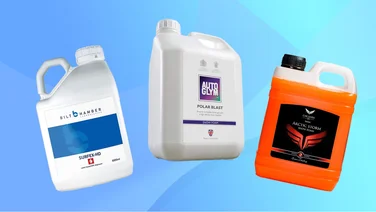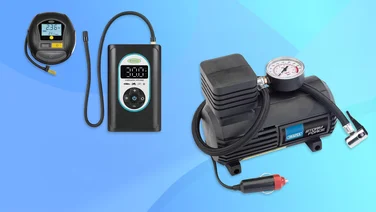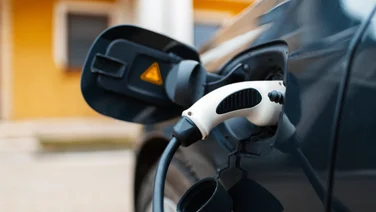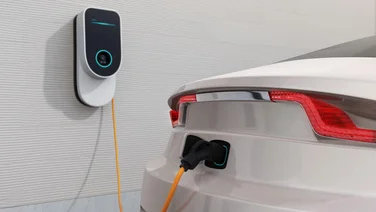To help us provide you with free impartial advice, we may earn a commission if you buy through links on our site. Learn more
- Best tyre pressure gauges: At a glance
- How to choose the best tyre pressure gauge for you
- How we test tyre pressure gauges
- The best tyre pressure gauges you can buy in 2023
- 1. Halfords Digital Tyre Pressure/Tread Gauge: Best digital tyre pressure gauge
- 2. Halfords Essentials Dial Pressure Gauge: Best dial tyre pressure gauge
- 3. Halfords Essentials Analogue Pressure Gauge: Best analogue tyre pressure gauge

The Highway Code recommends that all of the tyres on a car, bike, or van are checked weekly, and using one of our best tyre pressure gauges makes it a quick, easy job.
What’s more, with spiralling fuel prices, we all need to work that little bit harder to make that gallon of petrol or diesel go that little bit further. And one of the easiest ways to do that is to check your tyres are correctly inflated with a tyre pressure gauge.
But the importance of tyre pressures goes well beyond economy. Correctly inflated tyres will ensure you have optimum grip on the road, and will reduce the chances of uneven tyre wear which can reduce a tyre’s lifespan. Low tyre pressure increases the chance of a blowout, too.
In our testing, we focused at the affordable end of the market, choosing our picks of the best digital, dial, and analogue gauges. We looked for accuracy, build quality, convenience, and affordability.
Best tyre pressure gauges: At a glance
- Best digital tyre pressure gauge: Halfords Digital Tyre Pressure/Tread Gauge | £12
- Best tyre pressure gauge dial: Halfords Essentials Dial Pressure Gauge | £10
- Best analogue tyre pressure gauge: Halfords Essentials Analogue Pressure Gauge | £5
How to choose the best tyre pressure gauge for you
Can I check the pressure of any tyre with any gauge?
Every tyre pressure gauge will have a working range, usually from around 5 PSI (pounds per square inch)/0.3bar to around 50 PSI/3.4bar, meaning they will be perfectly fine for most cars, motorcycles, and even bicycles. They will be fine for most vans, too, although depending on the size of your van and its wheel/tyre combination you might need a gauge with capability to read a little higher.
Do tyre pressure gauges also allow tread depth to be checked?
Not usually, but some also have a tool which can slide out into the tyre’s tread allowing you to get an accurate measurement. Other pressure gauges may have a standalone depth gauge as part of a bundle.
Which reading do I take? PSI vs bar vs kPa vs kg/cm2
There are a number of ways to determine tyre pressure, and the measure you prefer will largely depend on where in the world you are, and in the case of British motorists, whether you are more familiar with metric or imperial units.
In the UK, PSI (pounds per square inch) or bar (one bar is approximately the atmospheric pressure on earth at sea level) are most common.
Bar is equal to 100kPa (kilopascals), but while both are metric, bar isn’t part of the International System of Units, while kPa is. Kg/cm2 is a rarely-used metric measure in this country.
Don’t worry if that sounds confusing though; most gauges will either read in PSI or bar, and you can expect your car’s handbook to list both.
For reference, one PSI equals 0.07 bar, 6.9kPa or 0.07cm2
Analogue or digital tyre pressure gauges: which is best?
For ease of use, and to get an unambiguous reading, digital tyre pressure gauges are great for the novice user, and they also offer the ability to cycle through multiple units of measurements quickly and easily. However, without the need for a battery, you will always be able to depend on an analogue tyre pressure gauge. They’re often preferred by professionals because, fundamentally, there’s less to go wrong.
How to check your tyre pressure
You should always check tyre pressures when they are cold – checking them when hot (i.e just after you’ve been driving) will mean the air inside will have expanded giving you a false reading.
Take each tyre in turn, unscrew the plastic valve cap and attach your tyre pressure gauge to the valve in accordance with the instructions. Note the readings, and cross reference them with the recommended pressures – these can be found in either the owners’ manual, behind the fuel filler cap, or in the driver’s door jamb.
You can, of course, check your tyre pressures using an air compressor at a petrol station, while others prefer to use the gauges built into foot pumps or tyre inflators. But for a quick check, and the convenience of having something to hand in the glovebox, a tyre pressure gauge is perfect.
How we test tyre pressure gauges
We test a selection of the main types of tyre pressure gauges because each type has particular pros and cons. We always assess build quality and general construction, as well as usability, although all of the models here were simple and straightforward to use which made this less of a factor in our decision-making.
It’s essential for tyre pressure gauges to be as accurate as possible while also simple to read – you want to be able to get clear, true readings at a glance while you’re having to crouch down. In order to determine accuracy, we first take a reading having deflated a car’s tyres to 26psi. Then the tyres are reinflated by a tyre retailer, using professional equipment, to the manufacturer’s recommendations and readings are taken again with any variances noted. The clarity of the readout is considered objectively, and, finally, price plays a minor role in our overall assessment.
READ NEXT: Best tyre inflators
The best tyre pressure gauges you can buy in 2023
1. Halfords Digital Tyre Pressure/Tread Gauge: Best digital tyre pressure gauge

Price when reviewed: £12 | Check price at HalfordsHalfords’ digital unit is great value, more so when you consider you’re really getting two gauges for the price of one, and it could barely be easier to use. One press of the single button turns the unit on, and you’re ready to read your tyre pressures. Remove the tyre’s valve cap, press the gauge onto the valve and the pressure will be displayed – and will remain on the display for ten seconds before automatically powering off. Press and hold the power button to cycle through its various units: PSI, bar, kPa and Kg/cm2.
The tread depth gauge requires two presses of the power button, and a slider on the side forces a probe out of the end. The depth is displayed in millimetres, and there’s a helpful red, amber and green scale indicating if the tyre is below the legal 1.6mm depth, between 1.7 and the 3.2mm recommended minimum, or above 3.2mm – which will deliver the best grip..
The unit is about the size of a small box of matches, but it’s a little too bulky (and flimsy) to use the keyring attachment. If we were being picky, a backlight would be handy, but it’s hard to complain given the low price.
Key specs – Pressure range: 5-99 PSI/0.35-6.85 bar; Measurement units: PSI, bar, kPa, Kg/cm2; Accuracy: +/-1%; Batteries? Yes (CR2032)
2. Halfords Essentials Dial Pressure Gauge: Best dial tyre pressure gauge

Price when reviewed: £10 | Check price at HalfordsWith its £10 price tag, you might expect Halfords’ dial gauge to feel cheap and nasty. The reality is that it feels anything but: it’s reassuringly weighty and the dial is wrapped in a protective rubberised sleeve which features tyre tread patterns. It’s easy to grip and feels good in the hand.
It’s breathtakingly simple to operate. Simply remove the valve cap from the tyre and press the gauge onto the valve until the needle moves. There’s a button on the side which holds the needle until it’s released, meaning you don’t have to stoop down to take the reading.
The black-on-white display is clear and easy to read, even at awkward angles, and scales from 0-60PSI and 0-4.5 bar. It’s the kind of tool that could easily live in a glovebox or tool bag for years.
Key specs – Pressure range: 10-50 PSI, 0.5-4.5 bar; Measurement units: PSI, bar; Accuracy: +/- 2 PSI, +/- 0.15 bar; Batteries? N/A
3. Halfords Essentials Analogue Pressure Gauge: Best analogue tyre pressure gauge

Price when reviewed: £5 | Check price at HalfordsIf space is tight in a tool bag, tool roll, or glove box, a traditional analogue pressure gauge could be the answer. No bigger than a pen, it’s perhaps the most basic gauge here – but no less effective. In fact, it’s probably the easiest gauge here to use, and with one single moving part, there’s precious little to go wrong.
The tyre’s pressure forces the central rod out of the gauge; remove the gauge from the tyre valve and read the pressure from the scale. It’s particularly handy where access to the tyre valve is restricted. The Halfords Essentials gauge also has a plastic cap which doubles as a valve core removal tool.
Key specs – Pressure range: 10-50 PSI; Measurement units: PSI; Accuracy: +/- 2 PSI Batteries? N/A






